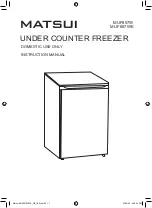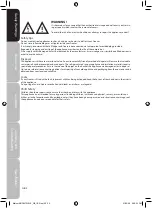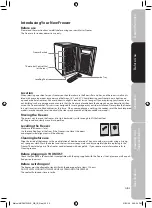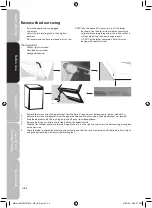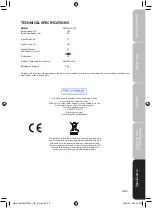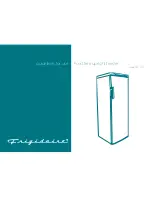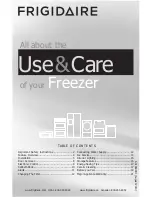
Satety
W
arnings
Operation
Cleaning
and
Troubleshooting
Specification
Before
Use
GB-7
Recommended storage periods
For recommended food storage times, refer to your food packaging.
Thawing frozen food
For some foods, thawing before cooking is unnecessary. Vegetables and pasta can be added directly to boiling water or
steam cooked. Frozen sauces and soups can be put into a saucepan and heated gently until thawed.
To Thaw frozen foods
1 Cover food loosely.
Thaw at room temperature. Don’t forget that thawing in a warm area encourages the growth of bacteria.
Always make sure there are no ice crystals in the food before cooking, particularly with meat. These crystals indicate
that the food is not fully thawed. They result in lower temperatures when cooking. Lower cooking temperatures may
not destroy dangerous bacteria.
Cook food as soon as possible after thawing.
Drain off and throw away any liquid lost during thawing.
Oven Thawing frozen foods
Many microwaves and ovens have thaw settings. To avoid bacterial build up, only use these if you intend to cook the
food immediately afterwards.
Safety Tips
Never re-freeze anything that has thawed out unless you cook it again, to kill off harmful bacteria.
Never re-freeze thawed shellfish.
Useful Tips
Re-seal packs properly after removing items. This prevents drying or ‘freezer burn’ and a build up of frost on any remain-
ing food.
Cleaning
Defrosting
After a period of time frost will build up in the Freezer. As a temporary measure, this frost should be scraped away using
a plastic scraper or other plastic kitchen implement.
NOTE Don’t use a metal or sharp instrument and do not use any electrical appliances to aid defrosting.
Complete defrosting will however become necessary approximately once per year, or if the frost layer exceeds cm (”)
to maintain the efficiency of the Freezer. This should be carried out if the frost build up cannot be scraped away, or if it
begins to interfere with the food storage. Choose a time when the stock of frozen food is low and proceed as follows:
1 Take out the frozen food, turn the Freezer off at the mains supply and leave the door open. Ideally the frozen food
should be put into another freezer or refrigerator. If this is not possible wrap the food, firstly in several sheets of
newspaper or large towels and then a thick rug or blanket and keep it in a cool place.
Place a shallow bowl or pan below the Freezer. Scrape away as much frost build up as possible using the plastic
scraper. Thawing of the remainder can be speeded up by placing bowls of hot water inside the freezer cabinet and
closing the door. As the solid frost loosens, prize it away with the plastic scraper and remove.
When defrosting is completed, clean your Freezer as described in ‘CLEANING’.
When the cabinet is completely clean and dry, close the door, switch on the freezer again, and turn the thermostat
control dial to position 7.
Leave the unit to cool down for an hour, and then you may start placing frozen food inside the cabinet. After that,
you need to turn the thermostat control dial to position -
after
hours later.
Matsui MUF857W-WE_GB_IB_Final_097 7
21/05/09 2:28:40 PM

